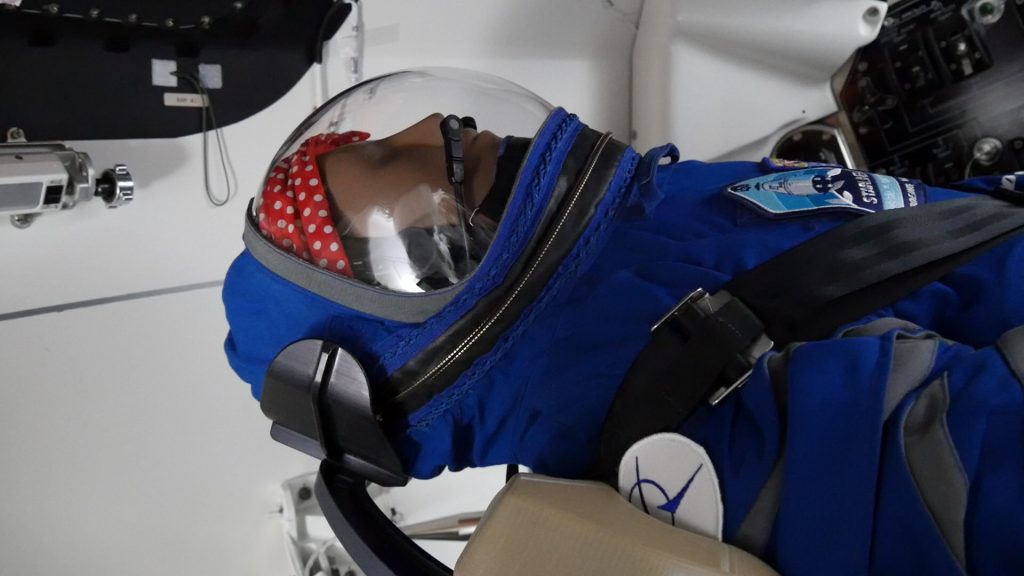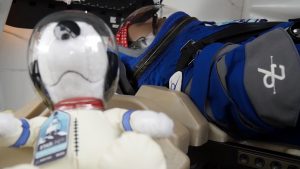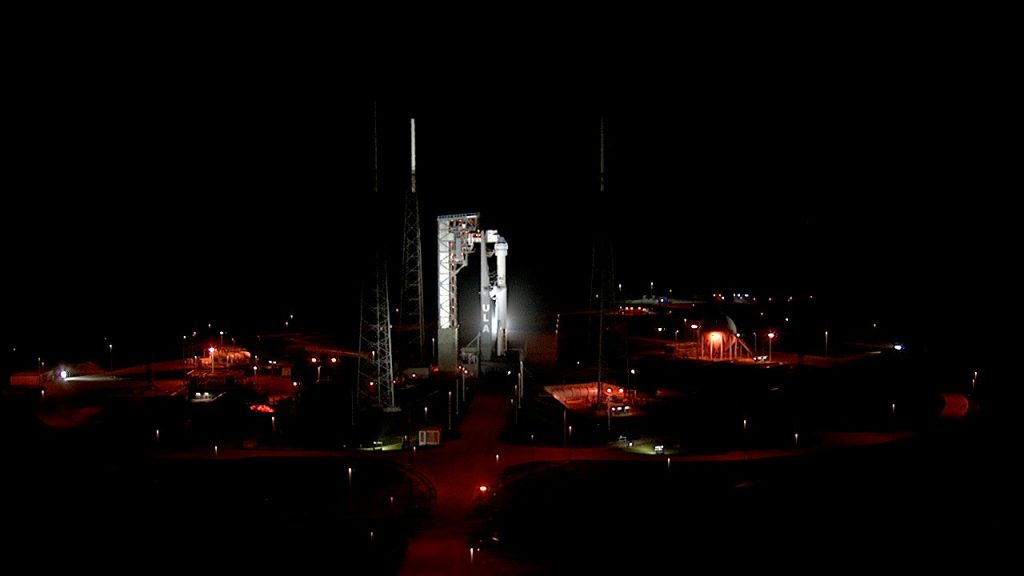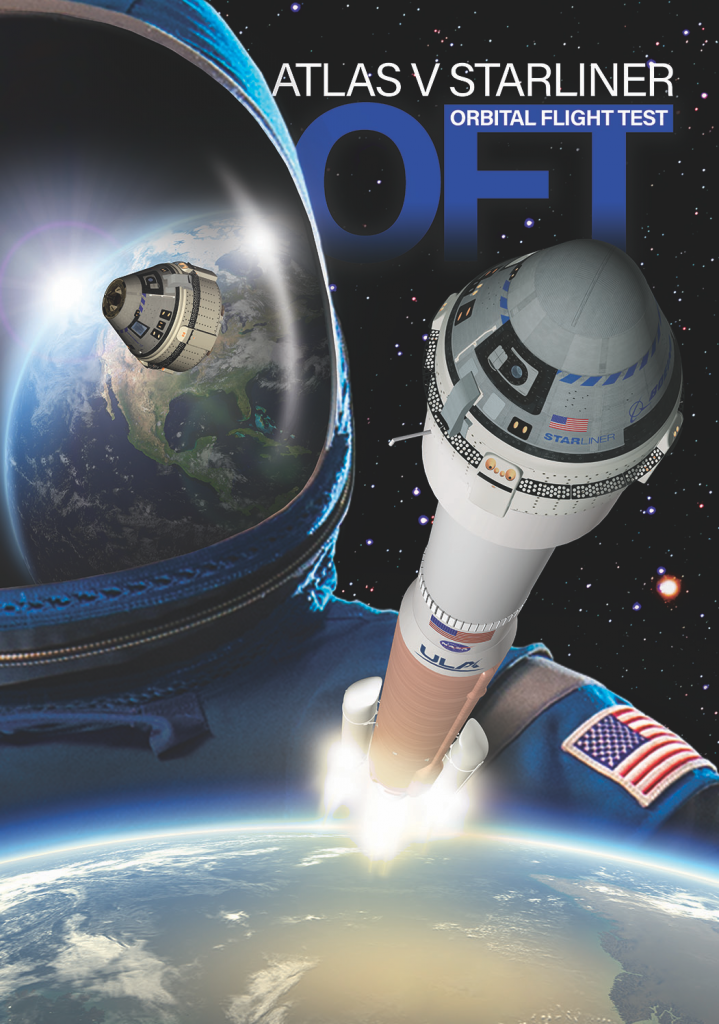Main engine cutoff of the Atlas V rocket booster has occurred.
Liftoff! Atlas V Clears the Launch Pad with Boeing’s CST-100 Starliner Spacecraft

Booster ignition and liftoff of the United Launch Alliance Atlas V rocket at 6:36 a.m. EST from Space Launch Complex 41 on Cape Canaveral Air Force Station in Florida. The rocket is on its way, carrying Boeing’s CST-100 Starliner spacecraft on its Orbital Flight Test to the International Space Station. About one minute after launch, the Atlas V rocket will achieve Mach 1. The Atlas V solid rocket boosters will jettison nearly two-and-a-half minutes into the flight.
About two-and-a-half minutes into flight, a series of key events will begin to occur over the next few minutes. The Atlas V solid rocket boosters will fall away shortly after launch. The Atlas first-stage booster engine will cut off, followed by separation from the dual-engine Centaur second stage. The Centaur first main engine will start, following by aeroskirt jettison. A few minutes later the Centaur engine will cut off.
The Launch Team is “Go” for Launch, T-4 Minute Hold Complete
Launch conductors have completed their polls of the launch teams. The T-4 minute built-in hold has been released and the countdown has resumed. The Starliner spacecraft has been configured for terminal count. Three seconds before launch, the Atlas V booster’s RD-180 engine will ignite.
Weather Remains Good for Launch of Atlas V and Boeing CST-100 Starliner
The latest weather update remains favorable for launch. Meteorologists with the U.S. Air Force 45th Weather Squadron predict a 90% chance of favorable weather for launch this morning. Primary concerns are a chance of violation due to ground winds, but those winds currently are well within limits.
Terminal Count Briefing Underway
The launch conductor is leading a terminal count briefing with the launch team. There are three control rooms: the United Launch Alliance’s Atlas Spaceflight Operations Center on the Cape Canaveral Air Force Station; the Boeing Mission Control Center at Kennedy Space Center; and the Space Station Control Room at Johnson Space Center in Houston. NASA’s Emergency Operations Center also is activated, and United Launch Alliance has teams in Denver who will monitor ascent of the rocket.
Meet Rosie – Boeing’s First Anthropometric Starliner Commander

Onboard Boeing’s CST-100 Starliner is an anthropometric test device, called Rosie, who will provide a wealth of information about what astronauts will

experience during flight aboard the spacecraft. Boeing named the test device after Rosie the Riveter, an icon who inspired women to join aerospace. Rosie’s 15 sensors will collect valuable data during the mission that will help make future crewed missions safe on Starliner.
Everyone’s favorite –Snoopy – is making his return to space aboard the Starliner spacecraft.
Atlas V and Boeing Starliner Remain Ready for Launch

The Atlas V rocket with Boeing’s CST-100 Starliner atop remain ready for launch from Space Launch Complex 41 at the Cape. Starliner’s destination is the International Space Station.
Meteorologists with the U.S. Air Force 45th Weather Squadron continue to predict an 80% chance of favorable weather for launch early this morning. Primary concerns for launch day are the Cumulus Cloud Rule and User Ground Winds violations during the instantaneous launch window.
Teams Clearing the White Room at Space Launch Complex 41
Preparations are underway for the launch of the Atlas V rocket with Boeing’s CST-100 Starliner atop at Space Launch Complex 41 on Cape Canaveral Air Force Station in Florida. The combined White Room Crew of Boeing and United Launch Alliance are closing and securing the white room, performing cabin leak checks of the CST-100 Starliner and clearing the white room. The team will clear the crew access tower and drive to a safe distance from the launch pad.
The Atlas V Rocket for Boeing’s CST-100 Starliner Launch

The Atlas V rocket that will launch Boeing’s CST-100 Starliner was modified specifically for this launch. It is designated N-2-2. The “N” signifies that the rocket configuration does not include a payload fairing. Instead, the Starliner’s own protective surfaces will take the place of the fairing to protect the uncrewed spacecraft during ascent. The 2-2 designates the rocket has two solid rocket motors and a dual-engine Centaur upper stage. The Starliner is attached to the Atlas V using a launch vehicle adapter, which includes an aeroskirt to reduce the aerodynamic loads on the vehicle.
The Atlas V booster is 12.5 feet in diameter and 106.5 feet in length. The booster’s propulsion is provided by the RD-180 engine system, which delivers 860,200 pounds of thrust at sea level. The two SRBs generate the additional power required at liftoff, with each providing 348,500 pounds of thrust.
The Centaur second stage is 10 feet in diameter and 41.5 feet in length. For this configuration, the Centaur is configured with dual RL10A-4-2 engines, each producing 22,600 pounds of thrust. The cryogenic tanks are insulated with a combination of helium-purge blankets, radiation shields and spray-on foam insulation. The Centaur includes an Emergency Detection System that monitors for critical hazards. This system will provide critical in-flight data, which supports jettison of the ascent cover and initiates CST-100 spacecraft separation.
The Starliner Orbital Flight Test will be the 81st launch of the Atlas V and will mark ULA’s 136th mission.
Learn more at www.ulalaunch.com.
Boeing’s CST-100 Starliner Ready for its Inaugural Flight

Boeing’s CST-100 Starliner is a 21st century human space transportation platform for use on missions to low-Earth orbit. The crew and service modules together are 16.5 feet high. Starliner’s diameter is 15 feet. For its design, Boeing leveraged decades of heritage in human spaceflight as well as included new technologies to make a safe and reliable vehicle. Starliner’s two main pieces are the crew module and service module. The crew module is intended to be reused for up to 10 missions.
Learn more at www.boeing.com/Starliner.
